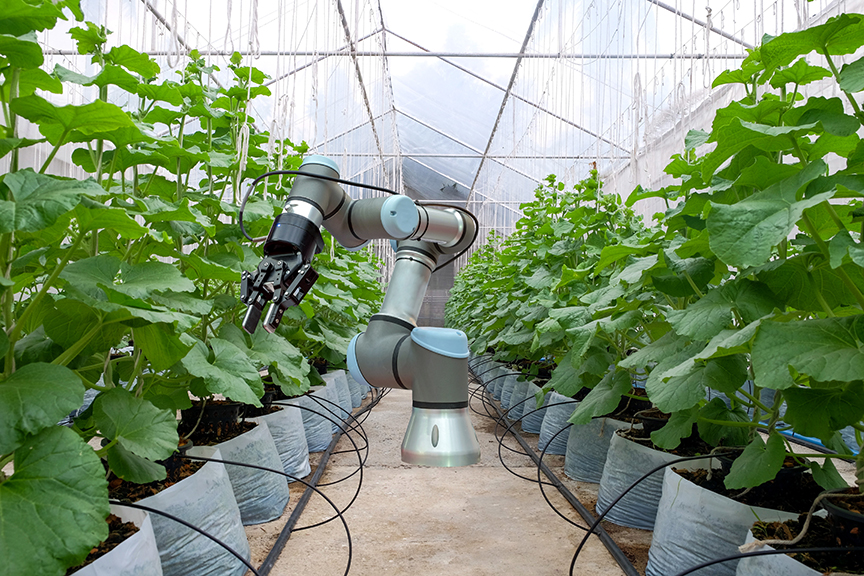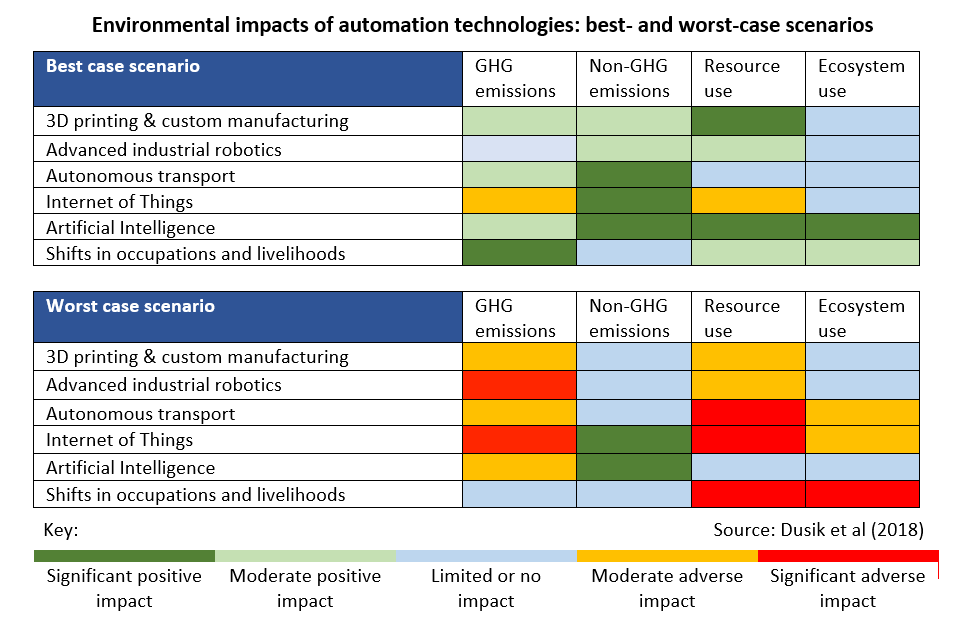What Effect Will Automation Have on the Environment?
We know automation will change or eliminate jobs, but what impact will it have on energy use, natural resource use and the environment?
There seems little doubt the Fourth Industrial Revolution—and particularly the uptake of digital and highly automated systems—will transform our economies in coming decades.
Effects of that transformation are the subject of multiple debates, such as those currently happening at Davos, and there are multiple signals that the spread of artificial intelligence, the Internet of Things, advanced robotics, 3D printing and autonomous transport are set to change society as we know it.
One major stream of conversation about the forthcoming transformation has focused on the changing role of human labour in an age of automation. Indeed, existing technologies already allow automation of half of all activities people are currently paid to do. They also significantly transform current business models and producer-customer relationships and create new employment opportunities for those able to use them. With a good chunk of the global labour force expected to be looking for new jobs by 2030, a robust response is obviously needed to manage adverse social side effects.
But what impact will all this have on energy use, natural resource use and the environment?

Upsides and Downsides
If carefully managed, changes in production and consumption patterns could create environmental improvements compared with the processes used today. But without proper environmental objectives and management systems, automation alone could have significant adverse impacts—especially on energy use (and emissions generated from the current energy mix), resource use and ecosystems. The figure below visualizes the best- and worst-case scenarios of these disruptive innovations.

Many emerging technologies offer the potential to reduce emissions. They could also theoretically improve resource-use efficiency, provided increased efficiency does not trigger over-consumption. This is a big "if," since customer relationships are increasingly based on detailed digital surveillance of behavioural patterns and involve highly effective marketing techniques that can ramp up demand for products or services.
On the other hand, changes in both consumption and production patterns increase the total demand for electricity and can easily raise greenhouse gas emissions, depending on the carbon footprints of the power sources used. They could also enhance unsustainable exploitation of natural resources—especially if our dependency on rare metals for production of electronic equipment further deepens. Proliferation of all sorts of electronic equipment and future composite materials also bring new challenges for recycling and waste management.
Lastly, potential large-scale dislocation of the labour force—particularly in low-/middle-income export-oriented economies with high population growth rates—could lead to a return migration to rural areas and increased use of available natural resources for livelihood purposes. This may worsen already significant pressures on ecosystems.
Double-Edged Swords
Considering these facts, there are no upfront guarantees new technological capabilities will automatically foster environmental sustainability. The forthcoming disruptive technologies are double-edged swords that may generate diverse outcomes based on the intentions and skills of their users.

Thus, it’s a good time to explore the linkages between these new technologies, the changing economic premises that will accompany their deployment, emerging patterns of production and consumption, and their potential environmental and social impacts. Such an enquiry may be guided by (even if not limited to) global aspirations to reach the Sustainable Development Goals.
From that perspective, the ongoing technological transformation could be strengthened by the use of economic instruments, especially those that: (a) incorporate environmental and natural resource use externalities of emerging business models, products and services; (b) promote resource- and emission-saving innovations; and (c) potentially also generate revenue for social support programs that may need to accompany a transition to new occupations and sources of livelihood. Other mitigation and enhancement options could be identified as our understanding evolves.
As the founder of the World Economic Forum, Klaus Schwab, rightly noted, before we devise strategies to cope with the Fourth Industrial Revolution, we first need to better understand it.
To that end, interested experts are invited to analyze the range of environmental impacts of forthcoming technological changes and their interaction with economic and social considerations. A preliminary scoping paper is available at Research Gate, and we invite interested parties to identify emerging issues of concern, give comments and suggest potential future steps for a deliberative enquiry (including a possible open discussion forum).
A greener, more equitable world won’t be an automatic outcome of the digital revolution. It’s our duty to shape its development even as its pace takes our breath away.
---
Jiri Dusik is a Technical Specialist with UNDP Viet Nam.
Barry Sadler is an Environment and Sustainability Analyst.
Opinions expressed are those of the authors and do not necessarily reflect views of the United Nations Development Programme.
You might also be interested in
How Can Blockchain Improve Sustainability in Mining?
Companies interested in sustainability and transparency are starting to use blockchain to trace materials back to their sources.
Citizen Science Fills Critical Gap in Monitoring Freshwater Resources
Most of us lack baseline data about our ecosystems, which makes it difficult to recognize changes and detect early warning signs. Enter citizen science.
Making Winnipeg a Smart City With New Technologies
We asked four members of our Winnipeg team how they would tackle some of Winnipeg’s most pressing issues: This is what they came up with.
Five Ways Blockchain Technology Can be Used for Resilience
Disruptive technology has vast applications toward increasing the resilience of individuals, communities and ecosystems. Here are five encouraging examples.
